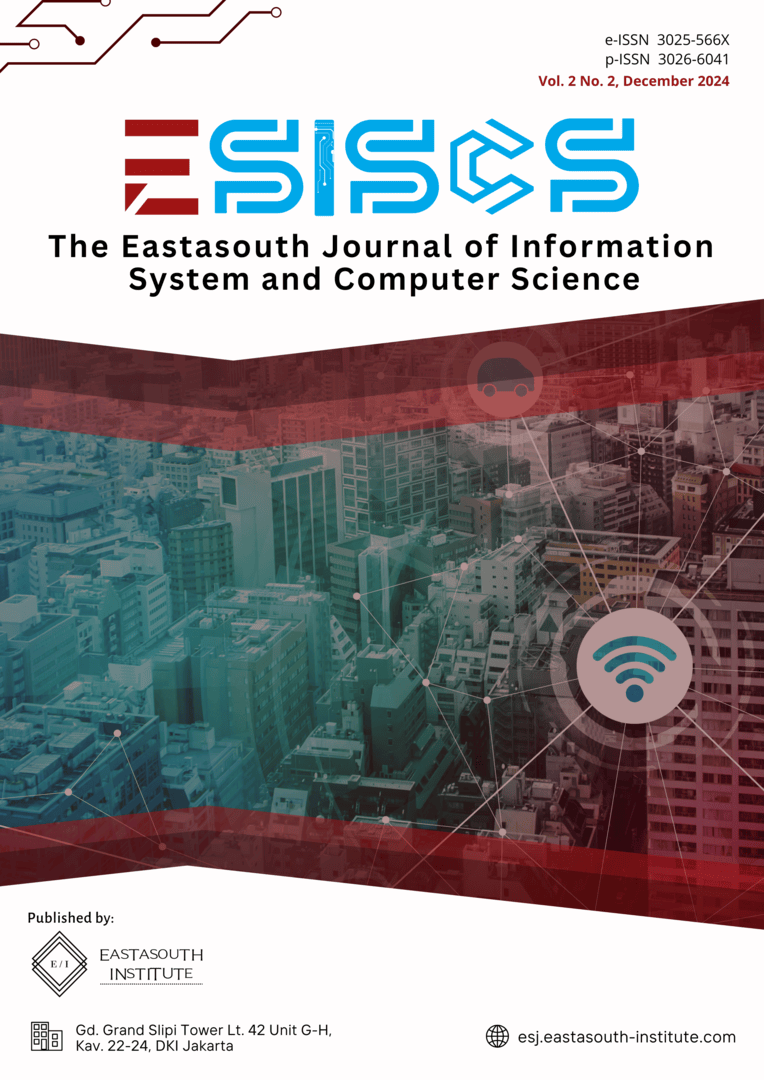The impact of blockchain on data integrity and security in distributed systems
Main Article Content
Abstract
Blockchain has toured the technological world as a revolutionary platform powering safe and secured storing of information across many sectors including digital currency and supply systems. This paper discusses the potential of this technology and the essential role it plays in the management of data integrity and security in distributed systems. It starts with a brief discussion of the key concepts of blockchain namely decentralization, the ledger is not controlled by the parties to the transaction or by any third party, immutability of records on the blockchain, the records on a blockchain cannot be tampered with once they have been put on the blockchain, and transparency, everybody can see the record but cannot influence it. The paper then looks at how these principles improve data security and data integrity as compared to centralized approach. Besides, it also looks at some of the drawbacks and possible limitations of blockchain about data consistency and protection again also giving scenarios that support its efficiency.
Article Details

This work is licensed under a Creative Commons Attribution-ShareAlike 4.0 International License.
References
C. Antal, T. Cioara, I. Anghel, M. Antal, and I. Salomie, “Distributed ledger technology review and decentralized applications development guidelines,” Futur. Internet, vol. 13, no. 3, p. 62, 2021, [Online]. Available: https://www.mdpi.com/1999-5903/13/3/62
R. Soundararajan and V. M. Shenbagaraman, “Enhancing financial decisionmaking through explainable AI and Blockchain integration: improving transparency and trust in predictive models,” Educ. Adm. Theory Pract., vol. 30, no. 4, pp. 9341–9351, 2024, [Online]. Available: https://www.kuey.net/index.php/kuey/article/view/3672
M. I. Hossain, T. Steigner, M. I. Hussain, and A. Akther, “Enhancing data integrity and traceability in industry cyber physical systems (ICPS) through Blockchain technology: A comprehensive approach,” arXiv Prepr. arXiv2405.04837, 2024, [Online]. Available: https://arxiv.org/abs/2405.04837
R. Xu, C. Li, and J. Joshi, “Blockchain-based transparency framework for privacy preserving third-party services,” IEEE Trans. Dependable Secur. Comput., vol. 20, no. 3, pp. 2302–2313, 2022, [Online]. Available: https://ieeexplore.ieee.org/abstract/document/9787357
H. Afzaal, M. Imran, and M. U. Janjua, “Formal verification of fraud-resilience in a crowdsourcing consensus protocol,” Comput. Secur., vol. 131, p. 103290, 2023, [Online]. Available: https://www.sciencedirect.com/science/article/abs/pii/S0167404823002006
L. Smith, “Big Data Workloads and Performance Engineering Strategies,” J. Syst. Archit., 2022.
J. C. Nunes, A. Ordanini, and G. Giambastiani, “The concept of authenticity: What it means to consumers,” J. Mark., vol. 85, no. 4, pp. 1–20, 2021, [Online]. Available: https://journals.sagepub.com/doi/abs/10.1177/0022242921997081
K. Pelluru, “Cryptographic Assurance: Utilizing Blockchain for Secure Data Storage and Transactions,” J. Innov. Technol., vol. 4, no. 1, 2021, [Online]. Available: https://academicpinnacle.com/index.php/JIT/article/view/35
P. Radanliev, “Cyber-attacks on Public Key Cryptography,” Preprint, 2023, [Online]. Available: https://www.preprints.org/manuscript/202309.1769
S. Singh, A. S. M. S. Hosen, and B. Yoon, “Blockchain security attacks, challenges, and solutions for the future distributed iot network,” Ieee Access, vol. 9, pp. 13938–13959, 2021, [Online]. Available: https://ieeexplore.ieee.org/abstract/document/9323061
S. Lee, J. Kim, Y. Kwon, T. Kim, and S. Cho, “Privacy preservation in patient information exchange systems based on blockchain: system design study,” J. Med. Internet Res., vol. 24, no. 3, p. e29108, 2022, [Online]. Available: https://www.jmir.org/2022/3/e29108/
G. Habib, S. Sharma, S. Ibrahim, I. Ahmad, S. Qureshi, and M. Ishfaq, “Blockchain technology: benefits, challenges, applications, and integration of blockchain technology with cloud computing,” Futur. Internet, vol. 14, no. 11, p. 341, 2022, [Online]. Available: https://www.mdpi.com/1999-5903/14/11/341
M. Utkina, “Leveraging Blockchain Technology for Enhancing Financial Monitoring: Main Challenges and Opportunities,” Eur. J. Interdiscip. Stud., vol. 15, no. 2, pp. 134–151, 2023, [Online]. Available: https://www.ejist.ro/files/pdf/530.pdf
M. Javaid, A. Haleem, R. P. Singh, R. Suman, and S. Khan, “A review of Blockchain Technology applications for financial services,” BenchCouncil Trans. Benchmarks, Stand. Eval., vol. 2, no. 3, p. 100073, 2022, [Online]. Available: https://www.sciencedirect.com/science/article/pii/S2772485922000606
C. Daah, A. Qureshi, I. Awan, and S. Konur, “Enhancing zero trust models in the financial industry through blockchain integration: A proposed framework,” Electronics, vol. 13, no. 5, p. 865, 2024, [Online]. Available: https://www.mdpi.com/2079-9292/13/5/865
V. Wylde et al., “Cybersecurity, data privacy and blockchain: A review,” SN Comput. Sci., vol. 3, no. 2, p. 127, 2022, [Online]. Available: https://www.ejist.ro/files/pdf/530.pdf
U. Jafar, M. J. A. Aziz, and Z. Shukur, “Blockchain for electronic voting system—review and open research challenges,” Sensors, vol. 21, no. 17, p. 5874, 2021, [Online]. Available: https://www.mdpi.com/1424-8220/21/17/5874
E. Daraghmi, A. Hamoudi, and M. Abu Helou, “Decentralizing Democracy: Secure and Transparent E-Voting Systems with Blockchain Technology in the Context of Palestine,” Futur. Internet, vol. 16, no. 11, p. 388, 2024, [Online]. Available: https://www.mdpi.com/1999-5903/16/11/388
P. Rani, P. Sharma, and I. Gupta, “Toward a greener future: A survey on sustainable blockchain applications and impact,” J. Environ. Manage., vol. 354, p. 120273, 2024, [Online]. Available: https://www.sciencedirect.com/science/article/abs/pii/S0301479724002597

